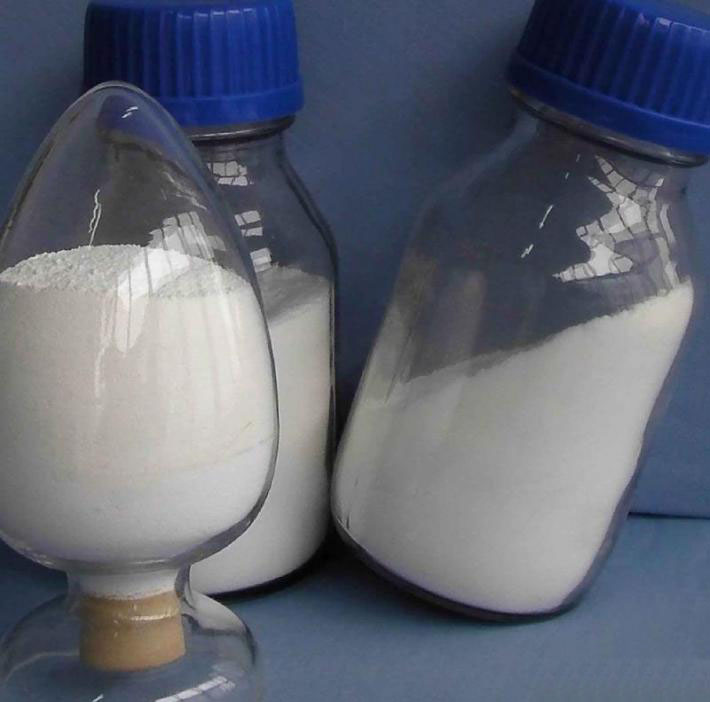1. Introduction to Zirconia Ceramics
Zirconia ceramics are white, yellow or gray when they contain impurities, and generally contain HfO2 impurities. The two have similar chemical properties and are not easy to separate. ZrO2 has three crystal types, low temperature is monoclinic crystal system, density 5.65g/cm3, high temperature is tetragonal crystal system, density 6.10g/cm3, higher temperature transforms into cubic crystal system, density 6.27g/cm3.

zirconia ceramic granulation powder
2. Manufacturing of Zirconia Ceramics
When preparing stable ZrO2 powder, electrofusion synthesis method (about 1000℃) and its high temperature synthesis method is (1600~1650℃ the temperature can be held for 4 hours). The ZrO2 synthesized by electrofusion has a complete reaction, part or all of it is a cubic phase solid solution, and there is a certain amount of monoclinic ZrO2 in the ZrO2 synthesized at high temperature.
The stabilization process can be summarized as follows: Mix and grind raw materials with a purity of >96% and stabilizers in a ball mill 8~ 24 hours, add a small amount of binder and press it into a compact under a pressure of 60~100MPa. The purpose of compaction is to make ZrO2 powder and the close contact between the stabilizer particles that it is conducive to the solid solution reaction.The compact is heated at 1450~1800℃ for 4~6 hours for solid solution.
For stabilization, the stabilized sintered block is finally crushed to various particle sizes. The stable sintered compact above 1800°C is not easy to grind. ZrO2 ceramic molding can adopt grouting method or dry pressing method. When grouting, a small amount of gum arabic (10% concentration) and about 20% distilled water can be added to the ZrO2 fine material to form a slurry with good grouting performance. Transparent ceramics can be obtained by hot pressing. If there are many coarse particles in the powder, the volume shrinkage will be small. If there are many fine particles, the product will have high density. The firing temperature is 1650~1800℃, and the heat preservation is 2~4 hours.
3. The performance and application of Zr02 ceramics
(1) High hardness. Mohs hardness resistance is 6.5, it can be made into cold forming tools, shaping , wire drawing , cutting tools, etc.

zirconia ceramic wire drawing tool
(2) High strength and good toughness. The flexural strength at certain temperature can reach 2100MPa, and 1190MPa at 1000°C. The flexural strength of chemical ceramics at certain temperature can reach 2000MPa, and the Kic can reach above 9~12MPa·m1/2. So it can be used to make engines components, such as push rods, connecting rods, bearings, cylinder liners, piston caps, etc.
(3) Semi-conductivity. ZrO2 has semi-conductivity at high temperatures. Pure ZrO2 is a good insulator with a specific resistance of up to 1013Ω·cm. After adding a stabilizer, since the valence of the stabilizer is different from Zr4 , oxygen vacancies are generated in ZrO2 after replacement to maintain the crystal Electrically neutral. Oxygen ion vacancies act as a charge defect, which increases the conductivity of ZrO2 at high temperatures. Because ZrO2 has this characteristic, it is often used to manufacture high temperature heating elements. The ZrO2 heating element can be used in the air, with a maximum temperature of 2100~2200℃.
(3) Anti-corrosion. ZrO2 is very stable in an oxidizing atmosphere and quite stable in a reducing atmosphere. Zirconia is a weakly acidic oxide that can resist acid or neutral slag attack (but it will be attacked by alkaline slag). Therefore, it can be used as a special refractory material, a casting port, and a crucible for smelting platinum, palladium, rhodium and other metals. Zirconia does not wet with molten iron or steel, so it can be used as a container. The inner linings of steel buckets and flow steel tanks are used as sprue bricks in continuous cast steel.
(5) Sensitive characteristics. There are oxygens spaces after stabilization, so it can be used as a gas sensor. Zirconia solid electrolyte. Under the parts, it has the characteristic of transmitting oxygen ions, which can be made into high-temperature fuel cell solid electrolyte diaphragms and probes for measuring oxygen in molten steel.
Declaration: This article is provided by CERADIR™ users or obtained from Internet, the content does not represent the position of CERADIR™. We are not responsible for the authenticity/accuracy of the article, especially the effects of the products concerned. This article is for study only, it does not constitute any investment or application advice. For reprinting, please contact the original author. If it involves the copyright and/or other issues, please contact us and we will deal with it asap! CERADIR™ has the interpretation of this declaration.







